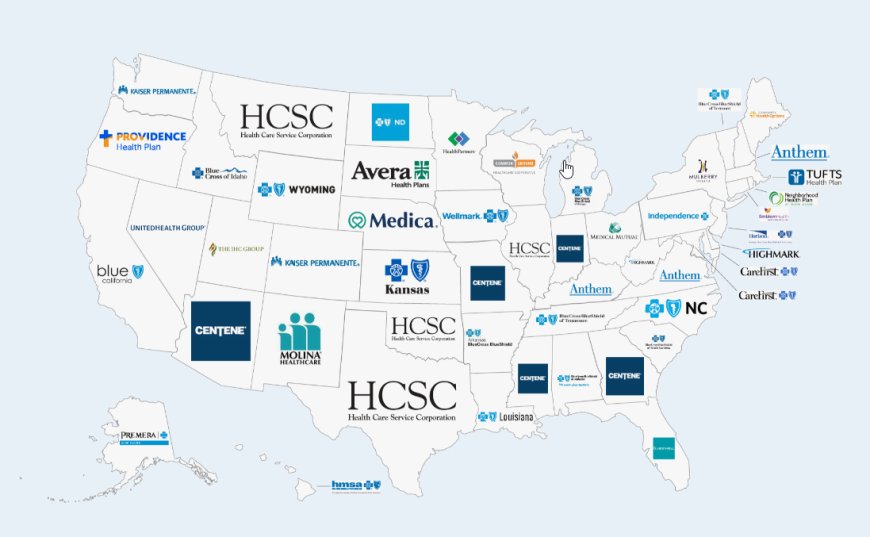Health Insurance Plans in the USA: Types, Costs, and Coverage
Explore the different types of health insurance plans in the USA, including employer-sponsored, private, and government programs. Learn about costs, coverage options, and key factors like premiums, deductibles, and subsidies that affect your healthcare expenses.

Health insurance is essential for managing medical costs in the U.S., where healthcare can be extremely expensive. Whether you're considering individual health insurance, employer-sponsored plans, or public programs, understanding the various plan types, costs, and coverage options is crucial for making informed decisions.
Types of Health Insurance Plans
-
Employer-Sponsored Insurance (ESI) : Employer-sponsored plans are the most common form of health insurance in the U.S. Employers typically cover a portion of the premium costs, making this option more affordable for employees. Plans offered can include:
- Health Maintenance Organizations (HMOs): These plans have lower premiums but require members to see in-network doctors and get referrals for specialists.
- Preferred Provider Organizations (PPOs): These plans offer greater flexibility, allowing patients to visit both in-network and out-of-network providers, though at a higher cost.
- Exclusive Provider Organizations (EPOs): Similar to HMOs, but without the need for referrals. However, they cover only in-network services.
- Point of Service (POS): These plans combine HMO and PPO features, requiring in-network care but allowing out-of-network treatment at a higher cost.
-
Private Individual Health Insurance : Individuals not covered by employer plans or government programs can purchase health insurance through the ACA Marketplace or directly from private insurers. The ACA offers four plan tiers:
- Bronze Plans: Lowest premiums, but highest out-of-pocket costs.
- Silver Plans: Mid-level premiums and out-of-pocket expenses, with potential eligibility for cost-sharing subsidies.
- Gold Plans: Higher premiums, but lower out-of-pocket costs.
- Platinum Plans: Highest premiums, but the most extensive coverage and lowest out-of-pocket costs.
-
Government Programs
- Medicare: A federal program for people aged 65 or older and some younger individuals with disabilities. It includes different parts covering hospital care (Part A), outpatient services (Part B), and prescription drugs (Part D).
- Medicaid: A joint federal and state program offering healthcare coverage for low-income individuals and families.
- Children’s Health Insurance Program (CHIP): Provides low-cost health coverage to children in families that earn too much for Medicaid but cannot afford private insurance.
Health Insurance Costs

The cost of health insurance in the U.S. varies based on several factors such as age, geographic location, the type of plan, and individual health needs.
-
Premiums : Premiums are the monthly amount you pay to maintain your coverage. In 2024, the average premiums for individual health insurance plans are as follows:
- Bronze Plans: $462/month
- Silver Plans: $584/month
- Gold Plans: $641/month
- Platinum Plans: $813/month
Employer-sponsored health insurance typically reduces premium costs, with employers covering a significant portion. The average annual premium for employer-sponsored health insurance in 2024 is approximately $8,431 for single coverage and $23,968 for family coverage.
-
Out-of-Pocket Costs : Out-of-pocket costs include deductibles, copayments, and coinsurance. Deductibles are the amount you pay before your insurance kicks in. After reaching your deductible, you share the costs of services with your insurer through copayments or coinsurance. For instance, a Silver plan may have a deductible of $6,115 annually for a 40-year-old.
-
Subsidies and Cost Assistance : The ACA provides subsidies to help lower-income individuals and families afford premiums and out-of-pocket costs. Eligibility for subsidies is based on household income and family size, and these can significantly reduce monthly premiums.
- Premium Tax Credits: These help lower monthly premiums for those earning between 100% and 400% of the federal poverty level.
- Cost-Sharing Reductions (CSRs): Available to those with Silver plans, CSRs lower out-of-pocket costs like deductibles and copayments(
Coverage Inclusions
Health insurance plans cover a range of essential health benefits, as mandated by the ACA. These benefits include:
- Preventive Care: Annual checkups, vaccines, and screenings.
- Mental Health and Substance Abuse Services: Counseling, therapy, and treatment for substance use disorders.
- Prescription Drugs: Coverage for medications, including those for chronic conditions.
- Maternity and Newborn Care: Prenatal visits, labor, delivery, and postnatal care.
- Hospitalization: Coverage for surgeries, overnight hospital stays, and treatments.
- Rehabilitative Services: Physical therapy, occupational therapy, and services for chronic or acute conditions.

Key Factors Affecting Health Insurance Costs
- Age: Older individuals tend to pay higher premiums. On average, a 40-year-old will pay more than a younger person for the same plan.
- Location: Healthcare costs vary by state and region, affecting the premiums insurers charge.
- Plan Type: PPOs generally have higher premiums than HMOs due to their greater flexibility in choosing healthcare providers(
Conclusion
Health insurance in the U.S. offers essential protection from high medical costs, but the specific plans, costs, and coverage can vary significantly depending on the type of plan and other factors. Whether you're choosing an employer-sponsored plan or purchasing coverage through the ACA marketplace, it's important to compare your options and understand how your health insurance plan will work for your individual needs.
For personalized advice and plan comparisons, it's always a good idea to consult a licensed insurance agent or use tools provided by the ACA Marketplace.
What's Your Reaction?




























































